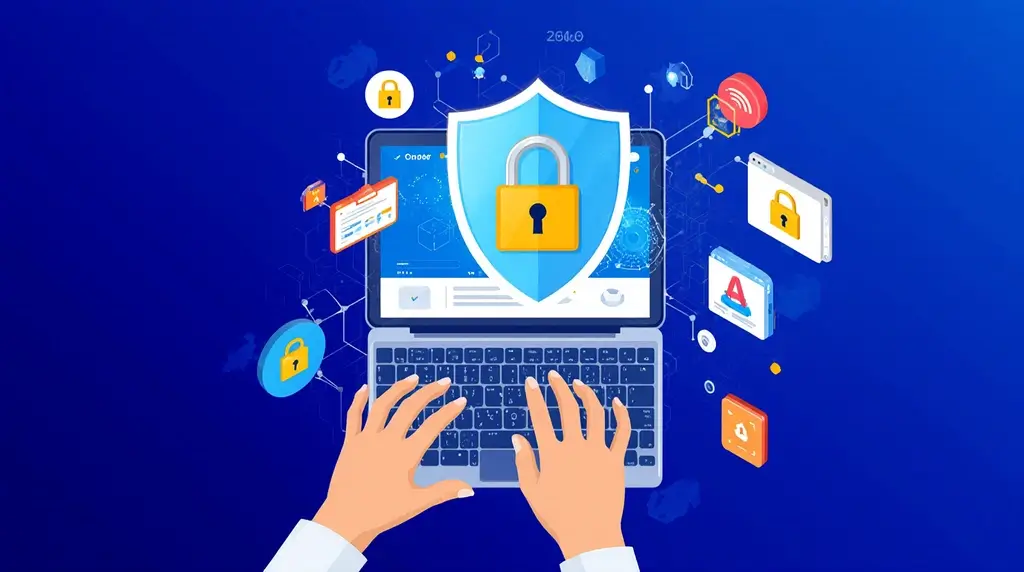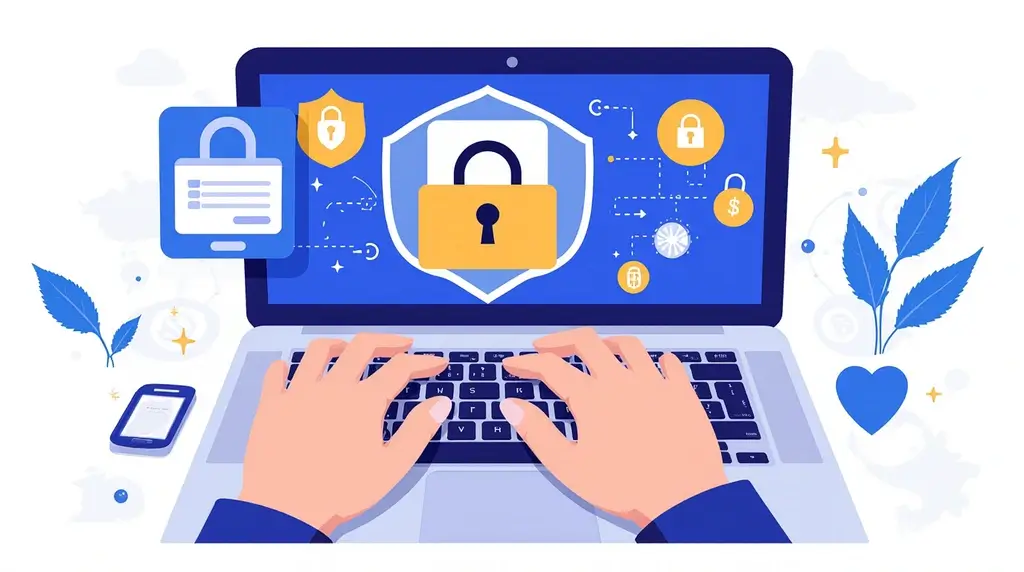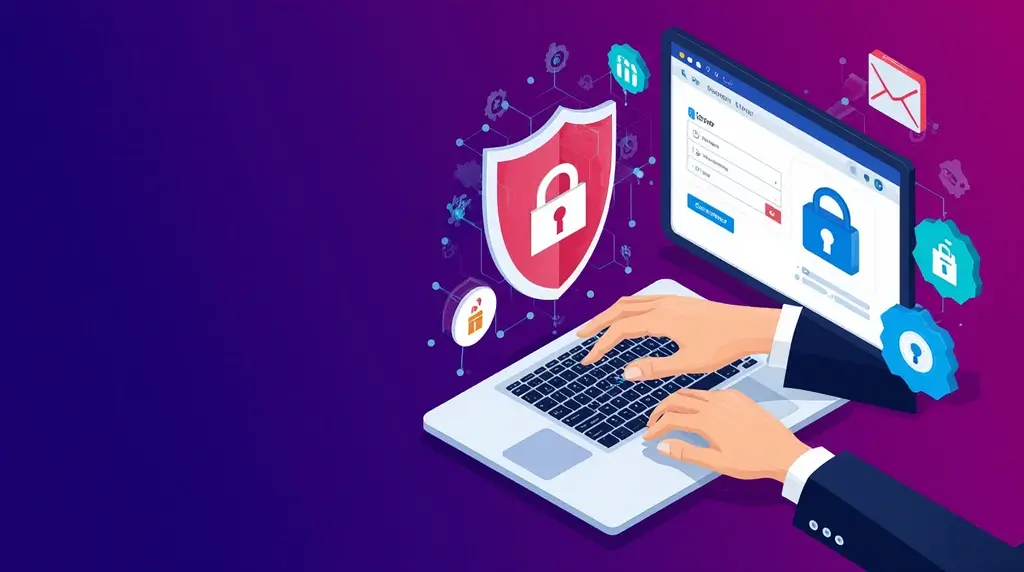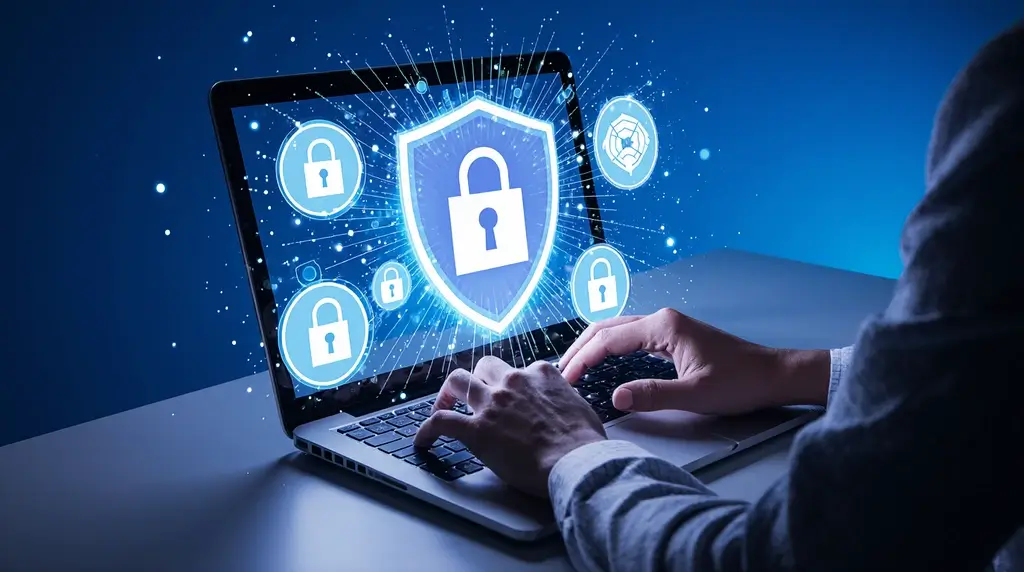Cybersecurity in Banking: How to Protect Your Money in 2025
Table of Contents
Introduction: Why We Need to Get Serious About Bank Security (Like, Right Now)

Look, I’m not trying to freak you out, but we need to talk about cybersecurity in banking. And I mean really talk about it—because it’s not just some boring IT problem anymore. It’s basically the biggest challenge banks are facing right now in 2025. get more info about Top Small Businesses Banking;
Here’s the thing that keeps me up at night: cybercrime is about to cost the world $10.5 trillion this year. Yeah, trillion with a T. That’s insane money we’re talking about, and a lot of it’s coming straight out of the banking system.
The really interesting shift I’ve noticed? Banks aren’t sitting around asking “Will we get hacked?” anymore. Now they’re asking “How do we stop it or at least make sure it doesn’t destroy us?” That’s a pretty big change in thinking, right? They’re finally admitting that playing defense with old-school methods just isn’t cutting it anymore.
And here’s where it gets personal: when a bank gets breached, it costs them about $5.9 million on average. Ouch. But honestly? The money’s not even the worst part. Get this—62% of customers lose trust in their bank after a breach, and a lot of them just take their money and leave. In an industry that’s literally built on trust, that’s basically a death sentence.
So what are we gonna cover here? I’m going to walk you through the biggest threats hitting banks right now, six major changes they absolutely need to make (and honestly, some of this stuff is pretty cool), and how they can build security into everything from day one instead of slapping it on as an afterthought. Whether you’re working in banking, worried about your savings, or just curious about online financial security, I’ve got you covered.
Section 1: The Scary Stuff—Top Cyber Threats Banks Are Dealing With in 2025

Alright, let’s dive into the threats. I promise to keep this interesting and not too doom-and-gloom, but you should know what’s out there.
1. AI-Powered Attacks (Yes, the Bad Guys Have AI Too)
So here’s the ironic part—banks are using AI to catch fraud and help customers, but guess what? Criminals are using the exact same technology to attack them. It’s like an arms race, but digital.
The scary part is how good they’ve gotten at it. We’re talking about AI that can create malware automatically, crack passwords way faster than before, and even clone people’s voices. And deepfakes? They’ve exploded by 243% in just the past year. That’s not a typo. These fake videos and audio clips are so realistic now that you can’t just eyeball them and know they’re fake anymore.
But wait, it gets worse (sorry). Criminals are using generative AI to write super convincing phishing emails by stalking your social media and online activity. Remember those obviously fake “Nigerian prince” emails we used to laugh at? Yeah, those days are over. Now they’re crafting emails that look exactly like something your actual bank would send, with details pulled from your own life. Creepy, right?
2. Ransomware Is Having a Moment (And Not in a Good Way)
Okay, so ransomware in banking has gone from annoying to absolutely terrifying. Check out these numbers: 65% of banks reported getting hit with ransomware in 2024. Back in 2021? It was only 34%. That’s almost doubled in just three years!
And the tactics have gotten nastier too. Now criminals don’t just lock up your bank’s systems and demand money to unlock them. Nope, they steal all the sensitive data first, then lock everything up. Then they’re like, “Pay us to unlock your systems AND pay us again or we’ll dump all this customer data on the dark web.” It’s basically extortion squared.
Why are banks such juicy targets? Well, think about what they’ve got: your Social Security number, credit card info, banking details, personal information, and even corporate secrets like merger plans. All of that has serious value on the black market. It’s like a buffet for cybercriminals.
3. The Supply Chain Problem (Your Bank Is Only As Safe As Its Vendors)
Here’s something most people don’t think about: your bank doesn’t operate in a bubble. They’re connected to tons of vendors, software companies, and partners. And here’s the kicker—attackers know they can’t always break into the bank directly, so they go after these less-secure vendors instead and sneak in through the back door.
Customer trust takes a massive hit when you factor in all these third parties. More than half of people get nervous when they think about all the outside companies that have access to their banking data. And honestly? They’re right to be worried.
The frustrating thing for banks is that while they can’t just say “sorry, not our problem” when a vendor gets hacked, they also don’t have total control over their vendors’ security. It’s like being responsible for someone else’s homework—you’re gonna get the bad grade, but you can’t make them study.
4. Good Old-Fashioned Trickery Still Works (Unfortunately)
Despite all this high-tech stuff, you know what still works ridiculously well? Just tricking people. Social engineering—basically manipulating people into giving up their info or access—is still one of the most effective ways to break into banking systems.
Get this: about 68% of breaches involve a regular person making an honest mistake. We’re not talking about evil insiders sabotaging things on purpose. Just normal folks clicking the wrong link or falling for a convincing phone call from someone pretending to be from the bank.
Stealing login credentials is still the number one way hackers get into accounts. They’ll send fake emails, create copycat login pages, call you pretending to be from your bank, or text you with urgent-sounding messages. Once they’ve got your username and password, they can just waltz right in like they own the place.
Section 2: Six Game-Changing Moves Banks Need to Make Right Now

Okay, enough scary stuff. Let’s talk solutions. Banks need to make some pretty major changes to keep up with all these threats. Here are six big shifts that need to happen—and honestly, some of this tech is actually pretty fascinating.
Shift 1: Getting Ready for Quantum Computers (Before They Break Everything)
Alright, this one sounds like sci-fi, but stay with me. Quantum computers are coming, and when they arrive, they’re going to be able to break the encryption that protects basically everything in banking right now. It’s not an “if” anymore—it’s a “when.”
Here’s what banks need to do:
Switch to quantum-proof encryption: There’s this thing called Post-Quantum Cryptography (PQC), and the government’s already published standards for it. Banks need to start using these new encryption methods that even quantum computers can’t crack.
Use a hybrid approach: You can’t just flip a switch and change everything overnight, so smart banks are using both old and new encryption together during the transition. It’s like having training wheels while you learn to ride the quantum bike.
Stop “harvest now, decrypt later” attacks: Here’s a sneaky thing hackers are already doing—they’re stealing encrypted data right now, knowing they can’t read it yet. But they’re betting that in a few years when quantum computers exist, they’ll be able to decrypt all that old data. So banks need to find their most sensitive long-term data and protect it with quantum-resistant encryption ASAP.
Shift 2: Nobody Gets Trusted Automatically Anymore (Zero-Trust Security)
Old-school security was like a castle—once you got past the walls, you were pretty much free to roam around. That worked great in medieval times, not so much now.
Zero-Trust is exactly what it sounds like: trust nobody, verify everything. Every single time someone tries to access something—doesn’t matter if they’re the CEO or already logged in five minutes ago—the system checks to make sure they’re really who they say they are and that they actually need access to whatever they’re trying to reach.
It works on this “least privilege” principle, which basically means you only get access to exactly what you need for your job, nothing more. It’s monitored constantly too, so if someone’s account starts doing weird stuff, the system notices immediately.
Shift 3: Getting All Your Security Tools to Actually Talk to Each Other (XDR and CSMA)
One of the biggest problems in banking cybersecurity USA banks face is that all their security tools don’t play nice together. You’ve got firewalls over here, antivirus over there, intrusion detection somewhere else, and they’re all just doing their own thing without sharing notes. Hackers love this because they can slip through the gaps.
Remember that Bangladesh Bank heist where hackers stole $81 million? That happened partly because the security systems were all fragmented and nobody saw the full picture of what was happening.
Extended Detection and Response (XDR) is like getting all these tools to finally work as a team. It connects everything—endpoints, networks, servers, cloud stuff—into one unified system so security teams can actually see what’s going on across the whole bank.
The next level is Cybersecurity Mesh Architecture (CSMA), which sounds complicated but is actually a pretty clever idea. Instead of putting all your security in one central location, you spread it out closer to whatever it’s protecting. Faster response times, more flexibility—it just makes sense.
Shift 4: Fight Robots with Robots (Automation for the Win)
Here’s the brutal truth: ransomware attacks happen at computer speed, and humans just can’t keep up. By the time someone notices something’s wrong and starts responding, the malware has already encrypted half the network. The only answer? Automate your defenses.
SOAR (Security Orchestration, Automation, and Response) is basically giving your security system permission to fight back automatically. The second it detects ransomware, it kicks into action—isolates infected systems, blocks bad connections, saves evidence—all in seconds, no human required.
It connects with your other security systems and AI tools to create this unified defense network. The best part? It cuts down on “alert fatigue” (that thing where security teams get so many alerts they start ignoring them) and makes sure responses are fast and accurate. For banks serious about online financial security, this isn’t optional anymore.
Shift 5: Predicting Attacks Before They Happen (AI to the Rescue)
Basic fraud detection—you know, catching sketchy transactions after they happen—isn’t enough anymore. Modern banking cybersecurity needs to get ahead of the bad guys.
AI-powered threat intelligence is like having a crystal ball (okay, more like really smart pattern recognition, but you get the idea). These systems scan what criminals are talking about online, monitor dark web marketplaces, and analyze global cybercrime trends to predict what’s coming next. It’s proactive instead of reactive.
They also do real-time monitoring of everything happening on the network—weird login times, unusual data transfers, strange user behavior—and flag potential problems before they turn into disasters. It’s pretty impressive stuff.
Shift 6: Cloud Security Done Right (Plus Some Fancy Network Tricks)
Traditional security was built for on-premises systems, but more and more banks are moving to the cloud. The old defenses just don’t cut it in this new environment.
The good news? Cloud platforms actually have some killer security features built in: advanced protocols, 24/7 monitoring by the cloud provider’s security teams, DDoS protection, and sophisticated identity management with multi-factor authentication and role-based access controls.
Micro-segmentation is this cool strategy where instead of treating your whole network like one big space, you divide it into tiny isolated segments. Each one has its own security controls. So if hackers break into one segment, they can’t just run wild through everything else. It’s like having fire doors in a building—contains the damage to one area. For digital banking safety, this is a game-changer.
Section 3: Building Trust and Staying Secure Long-Term
Technology’s only part of the solution. Banks also need to change their culture, rethink how they build systems, and actually engage with customers about security.
What Real Cyber Resilience Looks Like
Cyber resilience isn’t just about preventing attacks—it’s about being able to take a hit and keep going. It’s the organizational equivalent of being able to roll with the punches.
Here’s what that means in practice:
Get really good at catching problems early: The faster you spot a breach, the less damage it does. World-class banks measure “dwell time” (how long hackers hang out undetected) in hours, not days or weeks.
Limit the damage: Use that least privilege thing we talked about earlier to make sure even if something gets compromised, the attackers can’t spread to other systems easily.
Build Zero-Trust into everything: Design your systems assuming something will get hacked eventually, and make sure you can keep operating even when parts are compromised.
Security Needs to Be Baked In, Not Sprinkled On Top
This “Secure by Design” philosophy is pretty straightforward: build security into your systems from the very beginning instead of trying to add it later. It’s like building a house with good locks on the doors versus trying to jerry-rig them on afterwards.
The real problem child here is legacy systems—those old platforms that banks have been running for decades. They’re not compatible with modern security tools and they just can’t handle today’s threats. Banks need to slowly modernize this stuff using platforms that have security built into their core, not tacked on.
Better Ways to Prove You’re You
Passwords are basically the worst. They get phished, stolen, bought on sketchy websites, or just guessed. We need better options.
FIDO (Fast Identity Online) and DPoP use cryptographic keys instead of passwords, which means there’s nothing for hackers to steal. You can’t phish what doesn’t exist.
The really cool stuff though is adaptive and behavioral authentication. Instead of just checking a password once when you log in, these systems continuously verify it’s really you based on how you type, how you use your device, your face, your voice, even how you walk. It’s way harder to fake all that stuff, and it keeps checking throughout your session instead of just at the beginning.
Being Honest With Customers About Security
Banks need to stop treating cybersecurity like some secret back-office thing and start talking about it openly. Customers are choosing banks based on security reputation now, so it’s actually a competitive advantage if you do it right.
Be transparent about your security practices. Show customers you take this stuff seriously and know what you’re doing. It builds trust, which is literally the foundation of banking.
And here’s a wild idea: actually help customers protect themselves. Give them tools to check their own security risk level. Educate them about new threats like deepfakes and social engineering. Cybersecurity Banking Turn them into partners in security instead of treating them like weak links in the chain.
Conclusion: We’re All In This Together
Here’s the bottom line as we navigate 2025 and beyond: cybersecurity in banking isn’t something you fix once and forget about. Cybersecurity Banking It’s an ongoing journey that requires constant attention and adaptation.
The banks that’ll come out on top are the ones that expect attacks instead of hoping they won’t happen, adapt in real-time when threats evolve, and build security into absolutely everything they do.
Those six big shifts we talked about—quantum-proof encryption, Zero-Trust, integrated systems, automated responses, predictive AI, and advanced cloud security—aren’t just a tech shopping list. Cybersecurity Banking They’re a complete transformation in how banks think about and operate their digital services.
And here’s something that took me a while to really understand: good security doesn’t slow innovation down. It actually makes things run better and builds the trust that keeps customers around. Cybersecurity Banking Security and innovation aren’t enemies—they work together to create banks that are both cutting-edge and dependable.
Staying ahead of all this requires serious expertise. Cybersecurity Banking That’s where teams like The Global Ghost Team™ come in—they think like hackers to find vulnerabilities before the real bad guys do. Cybersecurity Banking It’s like hiring a thief to test your locks.
Your money and your data deserve the best protection available. Cybersecurity Banking As customers get smarter about security and regulations get stricter, the banking cybersecurity USA institutions invest in now will determine who wins and who gets left behind.
In 2025, protecting your money means understanding these threats, demanding good security from your bank, and taking responsibility for your own digital hygiene. Cybersecurity Banking; We’re all in this together—banks, customers, technology, and vigilance working as a team to keep the financial system safe and trustworthy.
Cybersecurity in Banking: How to Protect Your Money in 2025
Look, I’m not trying to freak you out, but we need to talk about cybersecurity in banking. And I mean really talk about it—because it’s not just some boring IT problem anymore. It’s basically the biggest challenge banks are facing right now in 2025. get more info about Top Small Businesses Banking;

